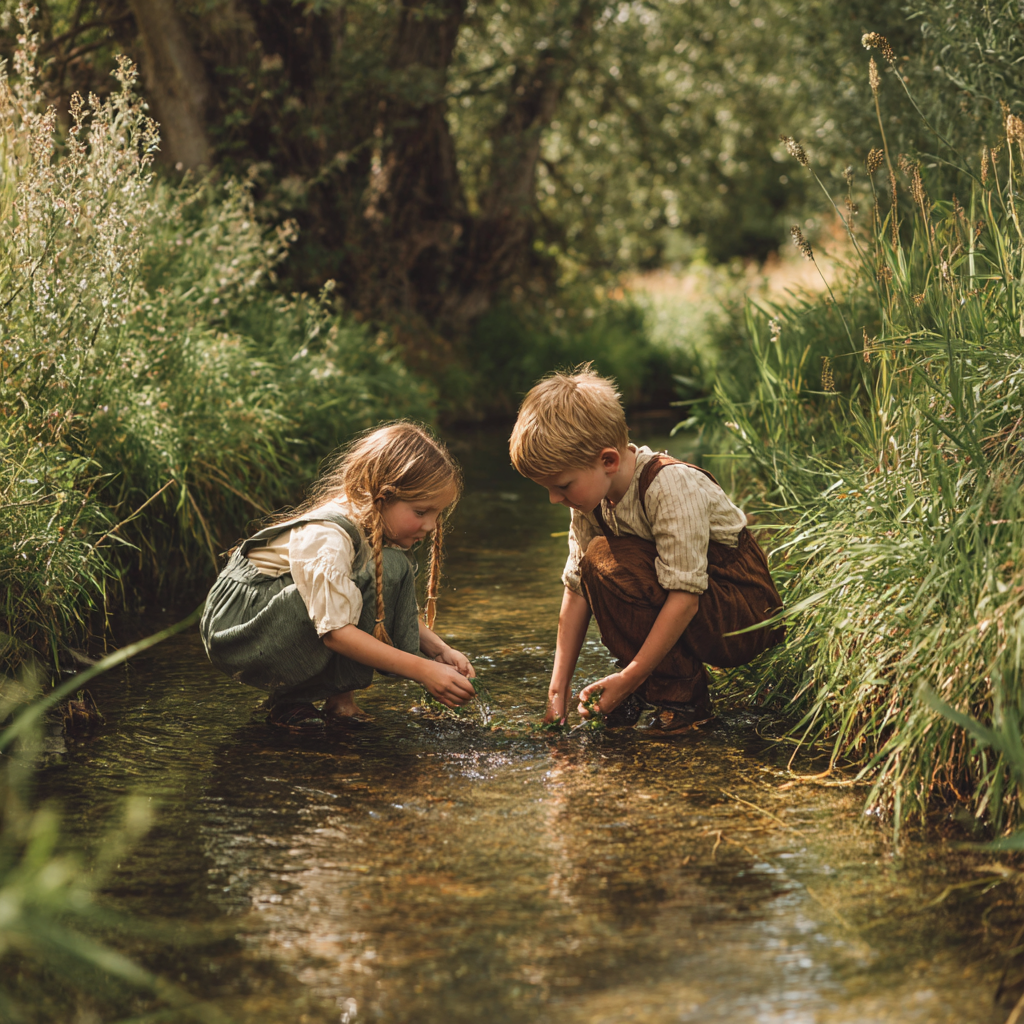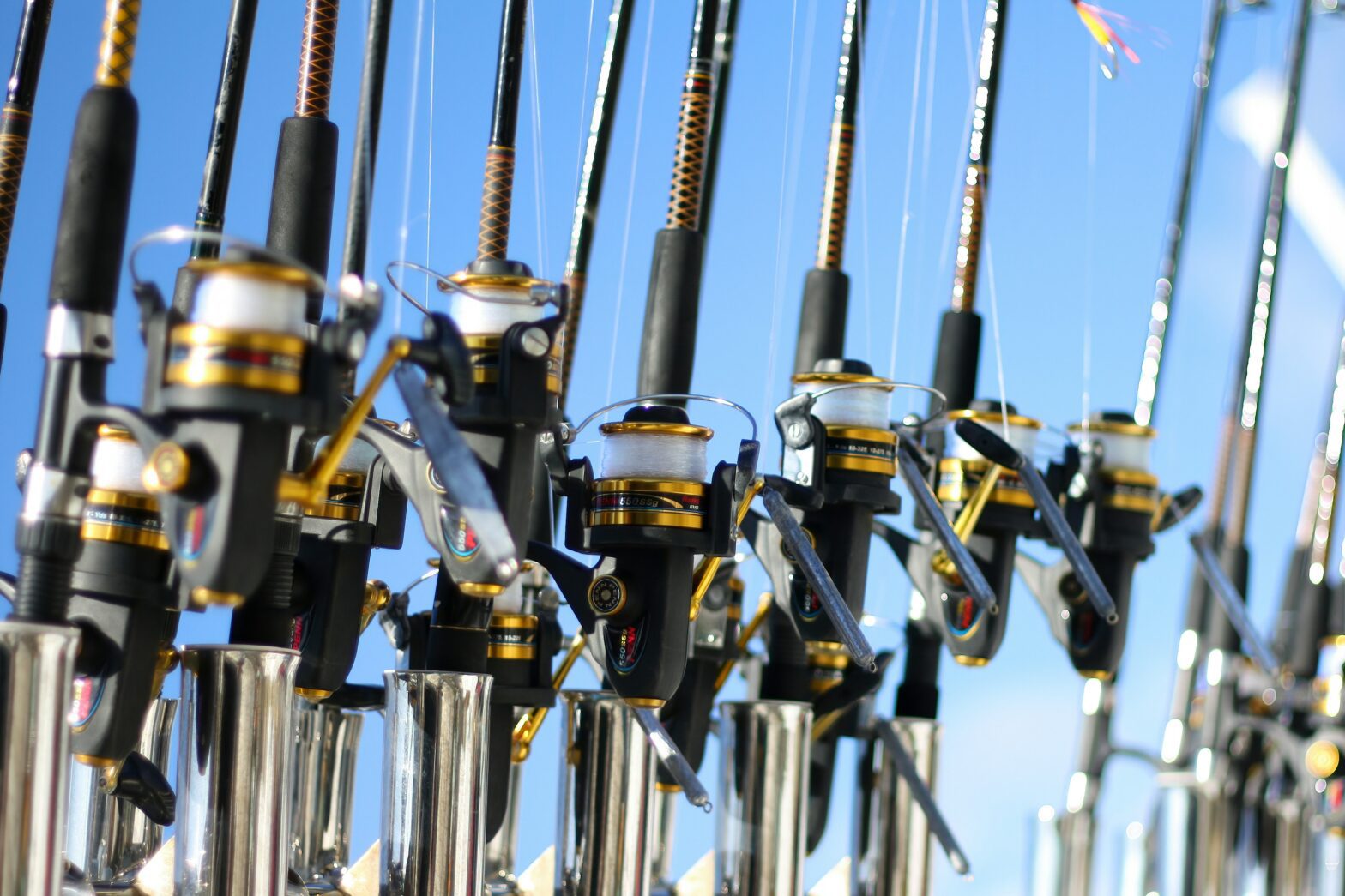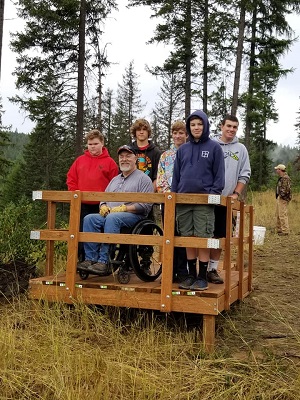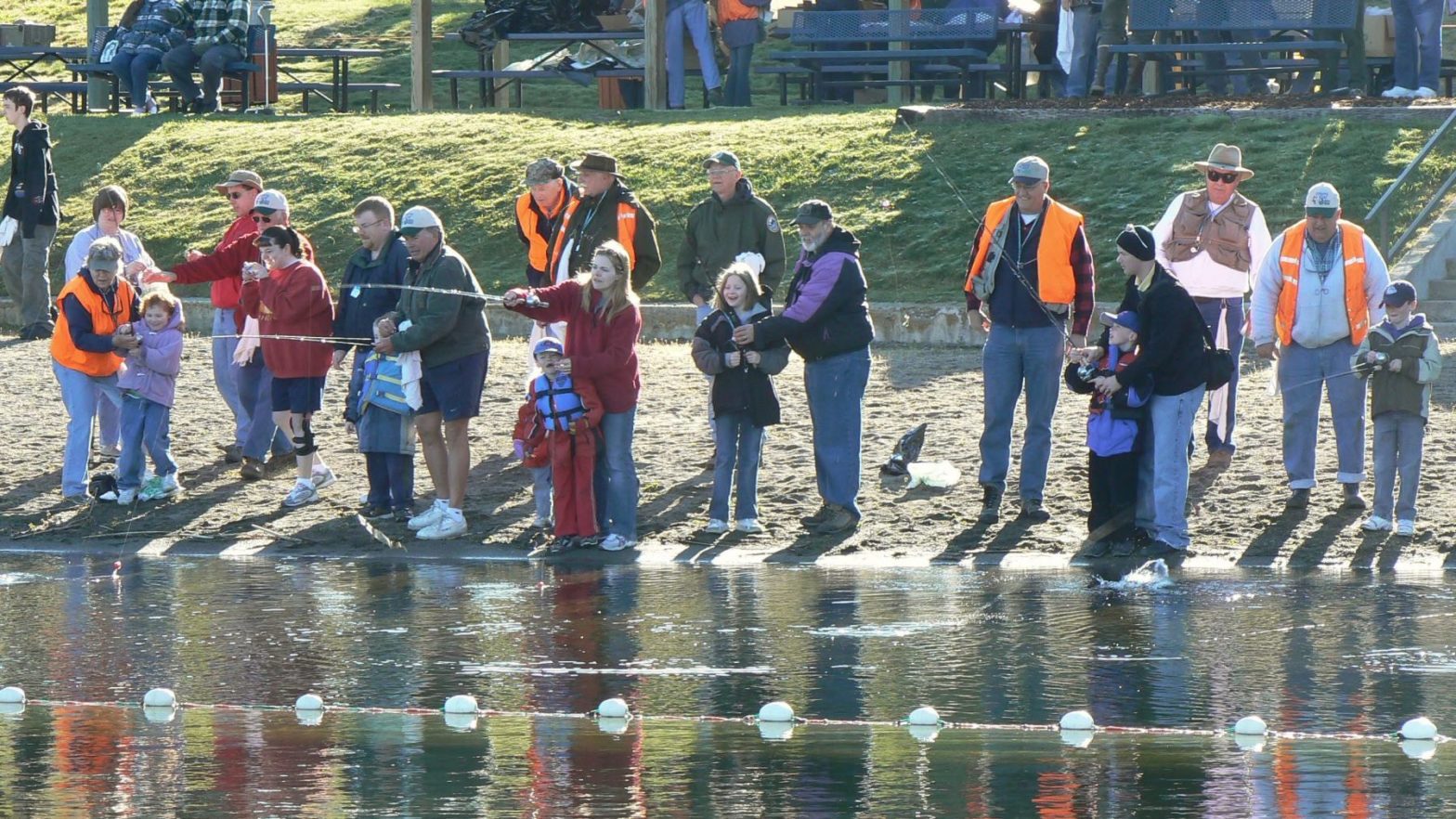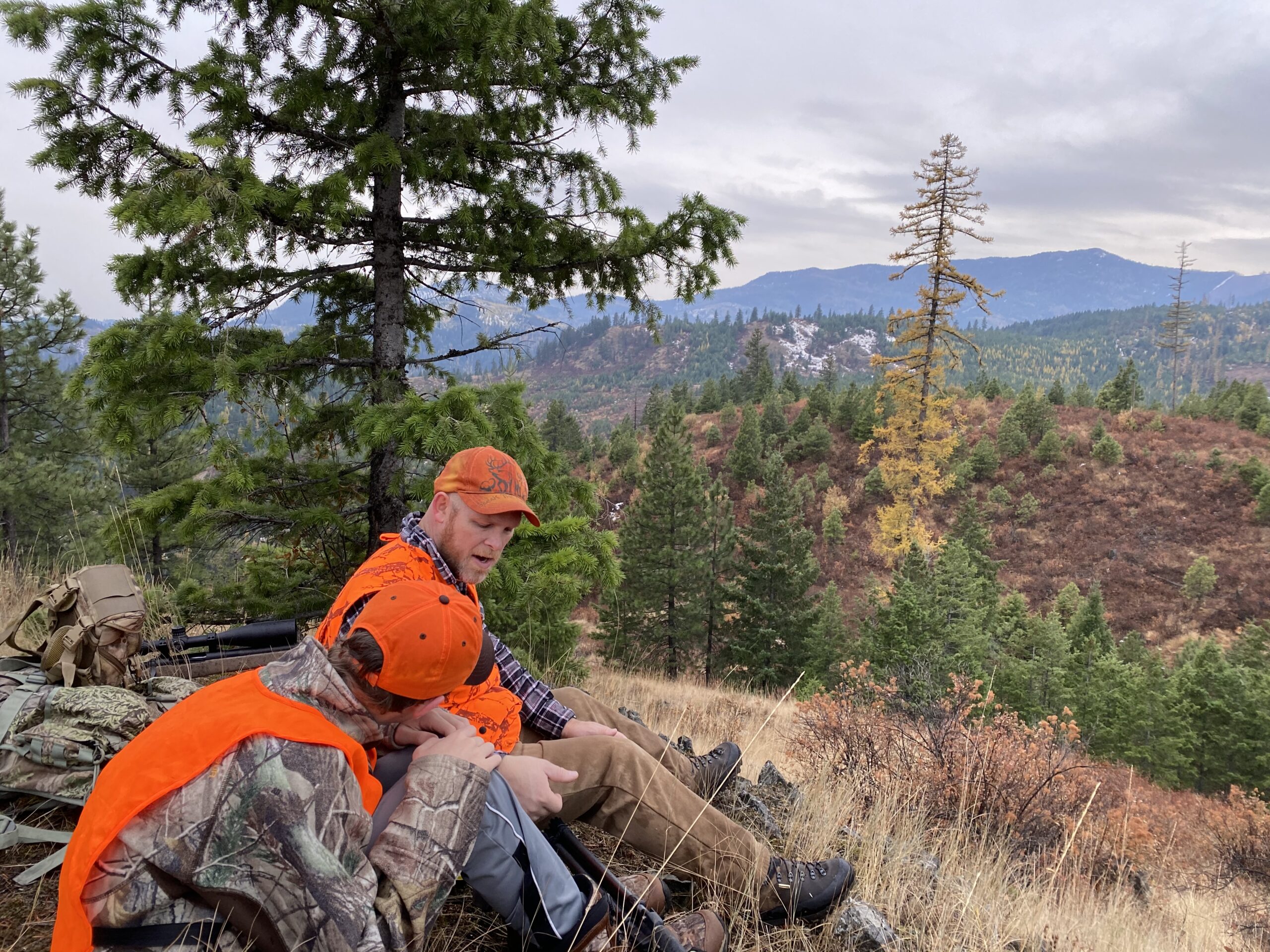Most of us didn’t learn to love the outdoors from a book.We learned it from wet boots, muddy hands, and the patient adults who showed us how to tell a deer track from a dog print without turning it into a pop quiz. Ask anyone in the Inland Northwest Wildlife Council how they got started, and you’ll hear familiar stories: fishing with a grandparent at a lake that “used to be quieter,” learning to shoot in the field instead of a classroom, or being turned loose in the woods with just enough supervision to keep things legal. These aren’t just fond memories—they’re the starting points of lifelong conservationists. And while every story is different, they all share the same thing:Someone showed us the way. Why Kids Need the Outdoors More Than Ever Today’s kids face a different world than many of us grew up in.More screens, less unstructured time, and fewer backyards that turn into wilderness with enough imagination. But the curiosity is still there. Kids are still kids—put them near a creek, and they’ll find the deepest part to step into whether you warned them or not. Hands-on discovery still works.Tadpoles still turn into frogs.Tracks still tell stories.And the outdoors still has a way of teaching patience, responsibility, and humility the same way it always has. (Usually by the method known as “the one that got away.” Some lessons never change.) Mentorship: The Thread That Connects Generations If you look back at your own outdoor education, chances are it didn’t come from a single moment; it came from a series of small ones. A parent teaching you to read a compass. A grandparent pointing out bird calls. A neighbor explaining why you don’t shout when you’re trying to spot a buck. Those lessons stick because someone cared enough to pass them on. That’s what the INWC works to protect: not just wildlife, not just habitat, but knowledge.Knowledge that only survives when people deliberately hand it down. And that’s why youth outreach matters. What INWC Is Doing for the Next Generation Kids Fishing Day Over a thousand young anglers get the chance to make their first cast, learn new skills, and leave with a fishing pole they’ll use long after the event. For many, it’s their first real connection to the outdoors—and the spark that leads to a lifetime of stewardship. Camp Reed Outdoor Education Our volunteers bring wildlife skulls, skins, and stories to hundreds of kids. The questions they ask range from brilliant to hilariously blunt, but the point is always the same: get them curious. Once a kid holds a beaver skull, “conservation” stops being an abstract idea. It becomes real. Growing Mentorship Opportunities We’re expanding opportunities for kids and teens to learn from experienced outdoorspeople. Because every accomplished hunter, angler, or conservationist started with someone who showed them the ropes, and now it’s our turn. Together, these programs form a pipeline of knowledge, respect, and enthusiasm that keeps Washington’s outdoor traditions alive. Why This Matters for Giving Tuesday Giving Tuesday is more than a national moment of generosity; it’s our chance, as a community, to invest in the future of Washington’s outdoor heritage. If we don’t pass these skills, values, and traditions to the next generation, they won’t magically reappear.They’ll fade, slowly and quietly, the way underused trails do. But the opposite is also true:When we invest in kids, the outdoors stays alive.Not just the landscapes—the legacy. And that’s where you come in. A Strong Call to Action: Help Us Pass the Torch If you believe in what Kids Fishing Day does…If you want to put skulls, skins, and real wildlife education into kids’ hands…If you understand how powerful one good mentor can be…If you want Washington’s outdoor traditions to survive, not just in memory, but in practice… Then we need you to stand with us on Giving Tuesday. Your donation goes directly toward the youth programs, outreach, mentorship, and hands-on conservation education that keep the next generation connected to the wild. This is not abstract.This is not someday.This is right now. Help us pass the torch.Help us shape tomorrow’s stewards.Help us keep the wild alive, one kid at a time. 👉 Donate this Giving Tuesday and pay it forward to the next generation Thank you for standing with us—and for believing that the future is worth investing in.
Tag Archives: outdoors
Conservation Corner
This Conservation Corner article is written by INWC member Ken McNaughton, M.F., who chairs our Fishing Committee. Ken shares an important conservation practice that many anglers may not be aware of—one that can make a significant difference for wildlife and our aquatic environments with just a small change in how we dispose of used fishing line. Recycling Fishing Line is Conservation The first thing to know about recycling old line is the fishing line types that can be collected. The only recyclable and, therefore, the most eco-friendly fishing line is a single-filament, nylon product like monofilament or fluorocarbon—even if it’s colored fishing line. Monofilament is a strong, single-strand plastic line—and the most common type among anglers. Fluorocarbon is a single strand of polyvinylidene fluoride. In a landfill, these types of lines won’t break down over time, so they can pose problems for birds and animals who get tied up in them. That’s why it’s great that they can be recycled. Other lines, like braided or fused types, can’t be recycled, but there are still ways to handle these discarded lines to minimize their impact on the environment. Finding a Collection Station Once you know that your line can be recycled, it’s important to understand that you can’t place it in your home recycling bin. Instead, you need to find a designated collection station. In cooperation with the Region 1 office of WDFW, the INWC, several years ago, installed 39 monofilament recycle stations at 31 area lakes managed by WDFW. Many INWC volunteers helped make this project a success. If you don’t know where to find one, contact the Area Water Access Manager at WDFW. Or check popular places that accept old line in marked bins placed either inside or outside, including bait and tackle shops, boat ramps, fishing piers, and fishing access points. Preparing Your Line for Recycling Keep in mind that only the line itself can be recycled. That means you have to remove any hooks or lures before you place the line in a bin. It’s also essential to make sure the line doesn’t have a lot of plant material or other growth on it before putting it in a collection facility. Create Your Own Collection Site If you don’t have a collection site anywhere near you for old fishing line, you can create your own! You can build a bin just like the ones at our established stations with 4 inch PVC and supplies from your local hardware store. Recycling fishing line is one of those simple conservation actions that carries tremendous importance. Discarded monofilament and fluorocarbon lines can persist in the environment for hundreds of years, entangling birds, mammals, and aquatic life with devastating consequences. By taking a few extra moments to properly dispose of old fishing line at designated recycling stations, anglers directly protect the wildlife and natural spaces we all cherish. Through the INWC’s partnership with WDFW, we’ve made it easier than ever for our fishing community to be part of the solution. Every spool of recycled line represents countless animals spared from injury or death—making this truly one of the most impactful conservation practices any angler can adopt.
Nesting Boxes for Wood Ducks: A Collaborative Conservation Effort
Written by Ken McNaughton, M.F. At the Inland Northwest Wildlife Council (INWC), we believe that conservation is most impactful when it’s community-driven, and especially when it helps foster the next generation of environmental stewards. One way we’ve supported that mission over the years is by mentoring local youth working toward their Eagle Scout rank. Historically, many of these Scouts have partnered with INWC to build and install wheelchair-accessible hunting and fishing platforms. These platforms have become a signature project of ours and are well-known across the Inland Northwest as a symbol of inclusion and access to the outdoors. But last fall, a new idea took root, one that would support a winged species we care deeply about: the wood duck. One Scout’s Vision In September, a high school senior named Micah approached us about his Eagle Scout project. He admired the Council’s work but asked, “Is building a platform the only option?” Fortunately, we had recently been in touch with Todd Baarstad, a private lands biologist with the Washington Department of Fish and Wildlife (WDFW). During a conversation with Todd, we learned the Kalispel Tribe of Indians was looking to partner with other group(s) to build nesting boxes for wood ducks along the Pend Oreille River. The timing couldn’t have been better. We reached out to TC Petersen, a biologist with the Kalispel Tribe of Indians wildlife crew, who confirmed the need for the boxes and provided detailed construction specifications. When Micah heard about the opportunity, he eagerly pitched the idea to his Scout leaders and received full approval to move forward. With support from INWC, Micah raised the funds for materials and organized a group of younger Scouts for a build day in early October, just one week before the modern firearm deer season. A special thanks goes out to our INWC volunteers Rich Furry, Bill Spalding, and Z Zubrick, who helped prepare all the box components making the build day both efficient and educational. Weather Delays, But Not Defeat Once the boxes were assembled, the team hoped to get them installed quickly. But as often happens in fieldwork, nature and schedules refused to cooperate. The prime window for installation closed as fall turned to winter, and bad weather, conflicting schedules, and school finals delayed progress for several months. Then, on a warm July 1st, the stars finally aligned. With a group of Scout volunteers, a few supportive parents, Riley from the Kalispel Tribe of Indians wildlife crew, and INWC’s own Ken McNaughton, the team set out along the Pend Oreille River. Armed with step ladders, patience, and plenty of teamwork, the group installed all 25 nesting boxes, each one affixed to a tree 6 to 8 feet above the ground, along a nearly quarter-mile stretch of riverbank. In just two hours, the project was complete. And more importantly, the groundwork was laid for a new generation of wood ducks to thrive. Why Wood Ducks Need Our Help The wood duck (Aix sponsa) is one of the most visually striking and ecologically important waterfowl species in North America. With iridescent plumage and a fondness for wooded wetlands, wood ducks are unique among ducks because they are cavity nesters, they lay their eggs in natural tree cavities, often high above the ground. However, mature bottomland hardwood forests, the preferred nesting habitat for wood ducks, have been severely diminished due to development, logging, and wetland drainage. The loss of these natural cavities has made it increasingly difficult for wood ducks to find suitable places to nest. That’s where nesting boxes come in. Carefully designed and strategically placed, these artificial cavities provide a safe, stable, and predator-resistant environment for hens to lay their eggs. Nesting boxes also help regulate temperature and shield the nest from harsh weather, improving the chances of successful hatching and fledgling survival. When maintained properly, these boxes can be used year after year and are a proven tool for boosting local wood duck populations. A Win for Conservation and Community This project represents more than the installation of 25 wooden boxes. It’s a celebration of what happens when individuals, agencies, and organizations work together toward a shared goal. From the Kalispel Tribe of Indians wildlife staff to the dedicated INWC volunteers, to the leadership and follow-through of a single motivated Scout, this was conservation in action. Eagle Scout projects are designed to demonstrate leadership, service, and lasting impact. Micah’s project did all of that and more. His work not only contributes to the health of a local species but also provides a model for how young people can take meaningful action for wildlife and habitat conservation. At INWC, we’re proud to support projects like these, projects that create a ripple effect across generations. And as those wood duck hens begin to explore their new nesting options along the river, we’ll know that one young man’s question; “Is that my only option?”, helped lead to something truly special.
*Volunteers Needed* Disabled Access Patrol
Committee chair, Ken McNaughton, will head up early on Friday to establish a camp site. Those who wish to can join us Friday, or just drive up on Saturday morning. We will patrol the routes on Boundary Mountain. Whatever we didn’t finish on Saturday, we will complete on Sunday before returning home. These annual route patrols are a vital service we provide that allows us a chance to not only inspect our wheelchair platforms for any needed maintenance, but also to cut away winter deadfall, ensuring that sportsmen/women with disabilities have access to the entire route provided. It also gives us a chance to work side by side for a common good and enjoys each other’s company in the spirit of fellowship. Don’t feel like you have to stay overnight on the mountain with us. If you can only make it for the day – we would love to have you! Contact Ken McNaughton for information and directions access@inwc.org
Disabled Access Patrol *Volunteers Needed*
Committee chair, Ken McNaughton, will head up early on Friday to establish a camp site. Those who wish to can join us Friday, or just drive up on Saturday morning. We will patrol the routes on Betty Creek. Whatever we didn’t finish on Saturday, we will complete on Sunday before returning home. These annual route patrols are a vital service we provide that allows us a chance to not only inspect our wheelchair platforms for any needed maintenance, but also to cut away winter deadfall, ensuring that sportsmen/women with disabilities have access to the entire route provided. It also gives us a chance to work side by side for a common good and enjoys each other’s company in the spirit of fellowship. Don’t feel like you have to stay overnight on the mountain with us. If you can only make it for the day – we would love to have you! Contact Ken McNaughton for information and directions access@inwc.org
*Volunteers Needed* Disabled Access Patrol
Committee chair, Ken McNaughton, will head up early on Friday to establish a camp site. Those who wish to can join us Friday, or just drive up on Saturday morning. We will patrol the routes on Brewer & Mitchell Mtns. Whatever we didn’t finish on Saturday, we will complete on Sunday before returning home. These annual route patrols are a vital service we provide that allows us a chance to not only inspect our wheelchair platforms for any needed maintenance, but also to cut away winter deadfall, ensuring that sportsmen/women with disabilities have access to the entire route provided. It also gives us a chance to work side by side for a common good and enjoys each other’s company in the spirit of fellowship. Don’t feel like you have to stay overnight on the mountain with us. If you can only make it for the day – we would love to have you! Contact Ken McNaughton for information and directions access@inwc.org
*Volunteers Needed* Disabled Access Patrol
Committee chair, Ken McNaughton, will head up early on Friday to establish a camp site. Those who wish to can join us Friday, or just drive up on Saturday morning. We will patrol the routes on Aladdin Mtn & Squirrel Meadows. Whatever we didn’t finish on Saturday, we will complete on Sunday before returning home. These annual route patrols are a vital service we provide that allows us a chance to not only inspect our wheelchair platforms for any needed maintenance, but also to cut away winter deadfall, ensuring that sportsmen/women with disabilities have access to the entire route provided. It also gives us a chance to work side by side for a common good and enjoys each other’s company in the spirit of fellowship. Don’t feel like you have to stay overnight on the mountain with us. If you can only make it for the day – we would love to have you! Contact Ken McNaughton for information and directions access@inwc.org
Spokane Kid’s Fishing Day *Volunteers Needed*
Saturday May 6th, 2023 at Clear Lake (South of City of Medical Lake, in southwest Spokane County) Fairchild Air Force Base Recreation Area Sponsored by: Inland Northwest Wildlife Council Washington Department of Fish and Wildlife and other fine sponsors LIMITED TO FIRST 950 SIGN-UPS Each kid receives: “Kids Fishing” T-Shirt and other gear The chance to catch a 3-fish limit of trout Cost: $10 per child Age: 5-14 Years For more information go to: https://wdfw.wa.gov/fishing/contests/youth.html REGISTRATIONS NEED TO BE POSTMARKED BY: APRIL 21st, 2023 2023-clear-lake-kids-fishing-event-registration-form-0
ADA Open House
The Inland Northwest Wildlife Council, and its Disabled Access Team of Ken McNaughton and Ron Zubrick, invites you to join them for a day filled with information for those who have disabilities that create barriers, but still want to enjoy the great outdoors and all it has to offer. You will gain information on new disabled hunter access permit regulations, hear about existing local programs, assistive devices available for disabled sportsmen and locations provided for disabled sportsmen. With many area citizens having barriers that prevent them from fully enjoying our opportunities to hunt, fish, observe wildlife, or enjoy the outdoors, we will share ways to improve accessibility and increase opportunities. If you have a disability or know someone who does and want to regain the thrill of fishing, hunting, and wildlife viewing, then make plans to join us. Lunch is provided! Door Prize for one lucky disabled sportsman/woman: a one-day guided Chinook/Sockeye trip on the Columbia River, donated by John Sowell and “Fishin’4All.” Wow! Please RSVP at 509-487-8552 Inland Northwest Wildlife Council
American’s Attitudes Toward Hunting
By Marie Neumiller Each month I have the opportunity to attend WDFW commission meetings and speak on behalf of the members of the Inland Northwest Wildlife Council as a part of our ongoing education and outreach efforts. There has been a growing trend at these meetings with several commissioners noting the hunting population percentage and how it relates to the overall population of the state. For example, it was mentioned over and over that only 5% of Washingtonians hunt, so therefore, it must be true that 95% of the state opposes spring bear permit seasons, which in turn made canceling the season acceptable. In a recent conversation with WWC/HHC president Mark Pidgeon, on this topic, he pointed out that this argument is secundum quid and does not match the actual attitudes towards hunting. Mr. Pidgeon went a step further, and shared an interesting study with me that directly backed up his statement. This intensive study was conducted by the National Shooting Sports Foundation (NSSF) and Responsive Management. Together, these two organizations have been tracking American’s opinions on hunting, fishing, sport shooting, and trapping since 1995 through phone surveys. The full survey results can be found HERE, the study link is also posted at the bottom of this article [1]. Their findings paint an interesting picture of the overall approval of hunting, and if we look carefully at the results, we can see areas where we as hunters can improve our messaging and outreach efforts. Is hunting a dying sport? Some commenters at WDFW commission meetings attempt to paint hunting as an outdated way of life and give the impression that modern humans are above such primitive, cruel actions. They try to make it appear that WDFW is caving to a small minority opinion (pro-hunting) while ignoring the majority (anti-hunting). However, the NSSF study directly refutes that argument. When asked about legal hunting, 80% of Americans approve, even if they do not participate in the sport themselves. The study specifically used language emphasizing legal activities so that, “poaching or other illegal activities would not be considered in the responses.” (pg 7). This is an important distinction to make in a survey of this nature, hunters and non-hunters alike will agree that poaching is reprehensible and has no place in the North American Model of Wildlife Conservation. While hunting received an overall all approval rating of 80%, tolerance varied in several ways depending on the motivation, species taken, and methods used. Motivation for hunting There is a strong fluctuation in the approval for hunting when taking the individual hunter’s motivation into consideration. Hunting for what are considered to be more traditional or subsistence purposes saw widespread approval (see study page 12); protection of humans 85%, for the meat 84%, locally sourced food 83%, and wildlife management 82%. When hunting is done for what is perceived as more “selfish” reasons then the approval ratings absolutely tanked; sport hunting 50%, personal challenge 41%, trophy 29%. What can we learn from these numbers? Well, the results of this study answer my personal curiosities as to why anti-hunting groups work so hard to paint hunters as “blood thirsty, egotistical, trophy hunters.” The general public actually approves of hunting for the reasons that most hunters currently participate in the sport. So by changing the underlining image of hunters these opposition groups can potentially change the public perception of the activity as a whole. Most of us who hunt are in it for a variety of reasons – quality meat for our families, making memories with loved ones, reconnecting with nature and our roots, the experience, sustainable meat, and so much more. Our adventures outdoors lead us to want to protect wildlife and their habitats in accordance with the North American Model of Wildlife Conservation. It’s almost impossible to participate in this sport and not gain a love for wildlife and wild spaces. On their Facebook page Blood Origins [2] recently shared a quote from Karen Seginak that perfectly sums up a hunter’s desire to protect nature, “I didn’t become a hunter because I was a conservationist, I became a conservationist because I became a hunter.” What a perfect way to sum up the hunter/conservationist. We should each strive to do better with the messaging surrounding hunting. If all that we share publicly are the grip and grin trophy photos at the end of the hunt, then it will be easy for anti-hunting groups to erode our image and turn an 80% approval rating into a net negative. So what can you do? Share photos and stories from the entire hunting experience. Scouting, hiking, camping, shed hunting, field notes, family stories, successes, failures, sunsets, meals made from your harvests…EVERYTHING! Methods and Species Hunted Here again the approval ratings had a wild swing depending on the perceptions surrounding the species pursued and hunting methods used in that effort. Below are a few of the highlights from study pages 23 and 34 respectively. Species hunted approval ratings Deer 78% Turkey 78% Duck 74% Black bear 44% Grizzly bear 40% Wolf 39% African Lion 14% Elephant 7% Hunting method approval rating Archery 80% Hound Dogs 55% Scent attractants 43% Bait 32% High tech equipment 26% High fence 21% Spring bear 20% As hunters, we can argue all day about which pursuit methods and which animals are more ethical, but doing so only helps anti-hunting efforts. So long as the hunting is being conducted in accordance with the local laws and follows scientific models (that ensure the population improvements or sustainability) then why denigrate each other and add to any negative perceptions? We are each on a unique journey, let’s celebrate the paths that we take instead of declaring our personal methods to be best thus naming ourselves the arbiters of ethics. Just because I archery hunt for deer to make it more challenging, does not make a rifle hunter unethical or less fair chase. Conversely, just because a rifle hunter encroaches less on an animal’s personal space does not make …


